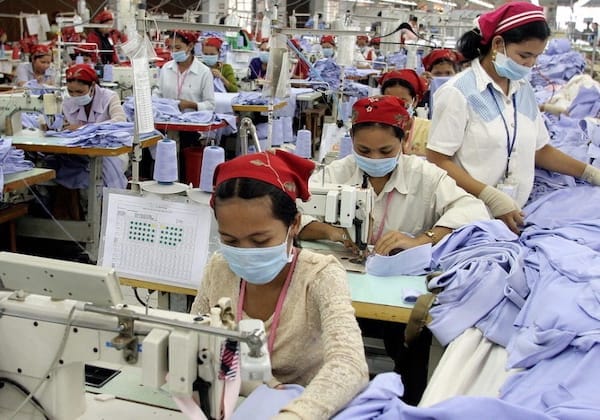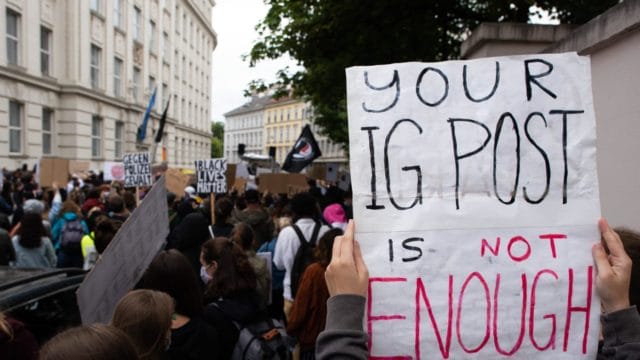Sustainability is about more than sustaining the Earth: we must sustain ourselves as well. The fashion industry is starting to implement sustainable fashion practices in order to protect the environment, but it often falls short when it comes to “us,” meaning inclusivity and equality among people.
Minorities often get the short straw in this industry as racist acts such as unequal treatment, lack of inclusivity, and exploitation are still present. Shouldn’t addressing racism within supply chains be part of building an ethical and sustainable business?
Racism is as pervasive a problem as climate change and pollution. Here’s a look at some of the most prominent issues that minorities face in the fashion industry.
What’s Wrong
1) Poor Working Conditions
In many of the countries where the majority of clothing is manufactured, environmental and personal conditions are poor. These poor conditions amount to extra vulnerability to climate change, contaminated or insufficient water supplies, and more.
This is a phenomenon called environmental racism. In the United States, Blacks were reportedly exposed to 1.5 times more pollutant than whites, and Hispanics were exposed to 1.3 times the amount of non-Hispanic whites.
These environmental problems directly affect the communities they are present in, and it is often people of color in these garment producing countries that get hit the hardest. A prime example of this issue in developing countries is the dumping of toxic waste by developed regions to third-world countries who lack the resources to effectively process the materials. Additionally, in developed countries, due to socio-economic inequality communities of color are the ones who tend to live in more polluted areas.
Labor rights violations are present in the US too. There are garment workers employed in Los Angeles factories under sweatshop conditions who are not being paid fair wages.

2) Racism in Hiring and Promotions
Research has shown that companies with diverse leadership boards tend to be more innovative, enjoy a stronger sense of community, have better equity and diversity policies, and practice more environmentally sustainable tactics. However, minorities are often overlooked in the hiring and promotion processes.
Elle Santiago, a former assistant store manager at Reformation, told the story of her deprivation of a deserved promotion. She explained that her manager “consistently hired white women with the same or less qualifications as [her], over [her].” She continued to say that Reformation had people of color doing the work of important titles without actually giving them the title.
Conversely, Rachel Faller, founder of the zero-waste brand Tonlé and the only white person on the team, recalls that having a diverse group of employees is pivotal to their work in sustainability. A diverse team allows for more perspectives, insights, and first-hand experiences that help shape the sustainable goals for a company.
3) Lack of Inclusivity

For a long time, there has been an obvious lack of racial diversity in the fashion industry, both in terms of models and leadership. Some brands do provide diverse representation however this has often been looked at as merely a box to check off in order to appear to be inclusive. This is because diverse representation is still very sparse and often occurs only after public scrutiny. Still, the majority of the faces that we see in the fashion world are White.
Attempts made by brands to promote diversity in their workplace often prioritize representative faces, voices, and bodies that will satisfy their White consumers. This makes it nearly impossible for people of a different race, culture, or body-type to feel represented in this industry.
About 40% of the U.S. population is non-White, with the average clothing size for women between 16 and 18 and for men over 20 the average waist size is 40.3 inches. These statistics are dramatically underrepresented in the fashion world.
Sustainable and ethical fashion brands are by no means exempt from the issue of inclusivity. We have certainly seen an uptick in diverse faces in the fashion industry, but there is a long way to go.
Inclusivity can never really be “checked off” as it is a constant factor that needs to be worked on. By listening to the voices of the underrepresented, fashion brands and other industries can start to make changes and do better.
4) Exploitation
The fast fashion industry has been relying on the exploitation of garment workers for the entirety of its existence. Fast fashion is defined as “an approach to the design, creation, and marketing of clothing fashions that emphasizes making fashion trends quickly and cheaply available to consumers.”
This industry offers inadequate pay and poor working conditions in order to maximize its own profits. Garment workers are often forced to work unpaid overtime (and they often do so because they cannot afford to lose their job).
Of the 74 million garment workers across the world, 80 percent of them are women of color. The low wages usually fall below a living wage, meaning they are not enough to provide workers and their families with basic human necessities.
In countries such as Bangladesh and Cambodia, orders have been cancelled due to COVID-19, and brands are refusing to pay suppliers for product and work that has already been completed. This leaves countless garment workers uncompensated for their labor. After years and years of relying on these workers, brands are now turning their backs on them.
To help drive change, you can sign the PayUp Fashion petition or take any of the following actions.
How You Can Help

Shop Minority-Owned Brands
To do your part in supporting people of color, you can start by supporting minority-owned sustainable businesses. If you are unable to purchase something from them, sharing their shop with your friends and family can help as well!
- Shop 14 BIPOC-owned sustainable fashion brands that are Eco-Stylist Certified (did you know you can filter our Brand Guide by BIPOC-owned brands?)
- Shop these 6 sustainable fashion brands that are founded and run by women of color
- Shop 28 more black-owned sustainable brands
Further Opportunities for Activism
Aside from shopping from minority-owned businesses, there are plenty more ways to take action. From donations to conversations, everyone can help in solving this issue. Start with these steps, and keep the momentum going!
- Sign Remake’s #PayUp petition
- Donate to the Garment Worker Center Emergency Relief Fund, helping garment workers in Los Angeles
- Amplify BIPOC voices by encouraging brands to make changes internally toward diversity and inclusivity
- Read How to Support Black-Owned Businesses in the Solar Industry
- Read and share stories told by minorities working in fashion
- Start conversations about the injustices in the fashion industry and other industries
- Educate yourself first and then share with those around you
We need to create sustainable change, and the fashion industry is but one place to begin. The goal is to sustain our planet, ourselves, and our people. This can only happen if we work creatively, diligently, and most importantly, together.

Kaitlyn is a content writer at Eco-Stylist. She studies Sustainability Science at the University of Iowa. Kaitlyn also loves thrift shopping, listening to Harry Styles, and running her online Depop shop.









